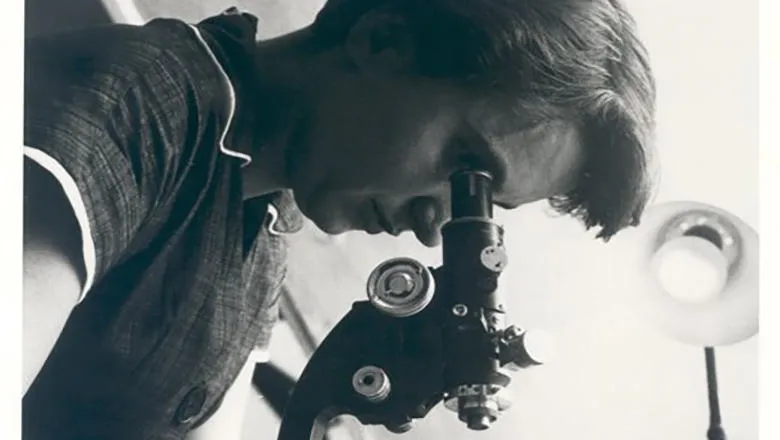28 February 2017
Rosalind Franklin: A contextual account
On Friday 10 February, Marelene and Geoff Rayner-Canham of Memorial University, Newfoundland gave a lecture about Rosalind Franklin in the Great Hall at the Strand Campus. Franklin, known for her role in the discovery of the structure of DNA, took the famous Photo 51 in the now unused laboratories in the basement of the King's Building in 1951, as part of a team that included Francis Crick and Maurice Wilkins. So it seemed only right, following a brief tour of what is left of the labs in the second basement, that Geoff and Marelene gave their talk at King’s.

The talk gave a historical context to Franklin’s life, exploring why she became a scientist. Starting with her schooling, the Rayner-Canhams were able to track Franklin’s scientific education and career from St Paul’s Girls School in 1918, to Newham College, Cambridge, on to work in Paris, King’s College London and finally Birkbeck College, then through to her early death in 1958 at the age of 37 from ovarian cancer.
Their research shows that from an early age Franklin was immersed in a scientific education developed and led by pioneering female educators such as Dorothea Beale, Frances Buss and Ida Freund. Role models and mentors who supported women, such as JD Bernal and Jacques Mering, continued to have a profound influence on her life.
Unfortunately one of Franklin’s most momentous achievements, her role in the discovery of DNA, was not acknowledged at the time, while Crick, Wilkins and James Watson went on to win the Nobel Prize in Physiology or Medicine in 1962 for work that should have included Franklin. And it didn’t stop there. The Rayner-Canhams went on to explain how further research and publications continued to omit Franklin’s contribution – the most famous being the The Double Helix written by Watson which gives a ‘dramatic account of how the double helix was mapped’ but portrays Franklin as difficult and only refers to her as ‘Rosy’, a name she hated.
Franklin’s research group at Birkbeck College became world leaders in the structure of virus and even after she had been diagnosed with cancer she continued to work almost up to the day she died. The Rayner-Canhams showed that despite her achievements Franklin was often not regarded as a scientist of equal worth, that she was limited by the perceptions of others and noted for her appearance only, because she was a woman.
Rosalind Franklin was one of the country's paramount scientists of the 20th century. Her achievements were immense but her gender meant that she had to try twice as hard in a world dominated by men. She was talented, she was hard working, she was selfless. She was a scientist.
Marelene and Geoff Rayner-Canham have long been active researchers in the field of the history of women in science. Apart from many academic papers on different topics, they have co-authored the books: 'Harriet Brooks –Pioneer Nuclear Scientist'; 'A Devotion to their Science: Pioneer Women in Radioactivity'; 'Women in Chemistry: Their Changing Roles from Alchemical Times to the Mid-Twentieth Century'; and 'Chemistry was Their Life: Pioneering British Women Chemists, 1880-1949'. Their latest book, 'A Passion for Chemistry: Chemistry and British Independent Girls’ Schools, 1820s-1930s' was published in February 2017.
